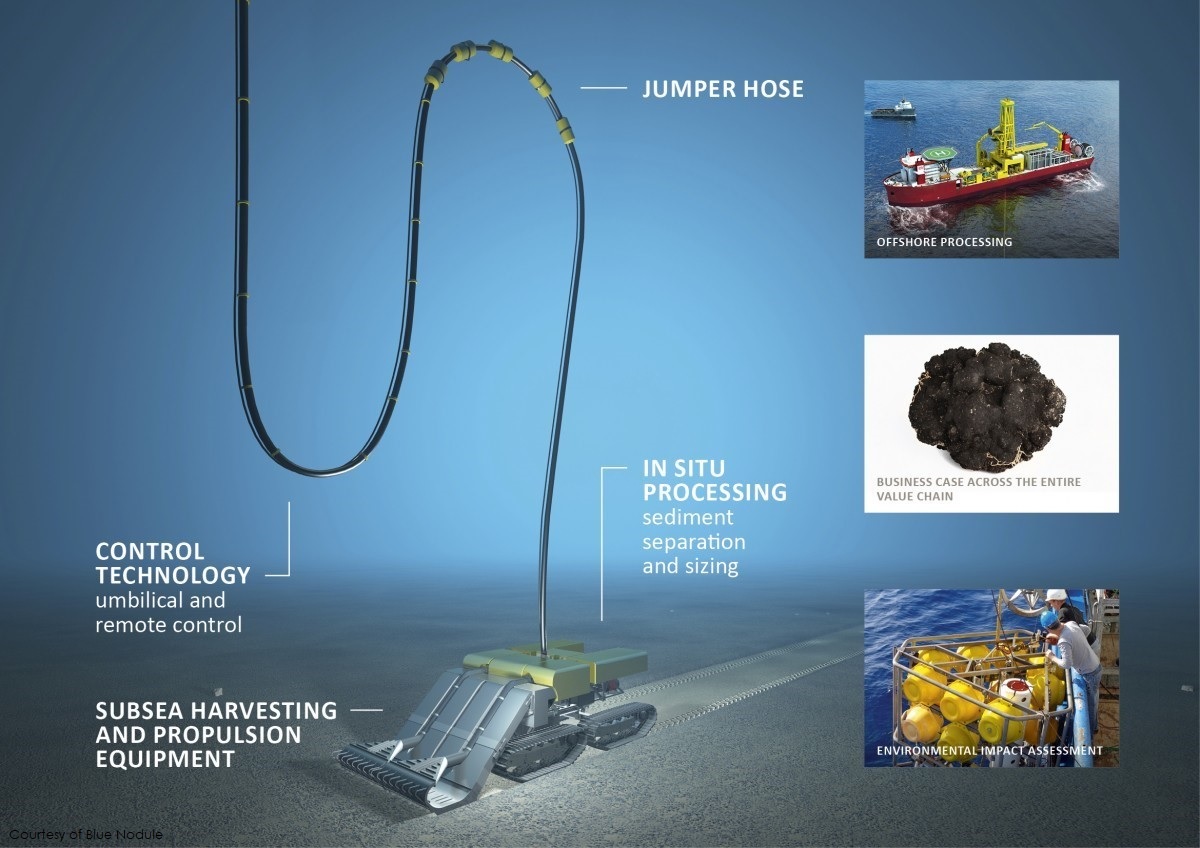OML is working with leading technology developers to employ the latest in proven technology for all of our projects.
Seabed minerals harvesting technology is being advanced by multiple experienced deep water and underwater technology companies, including our partner and investor Transocean, the world’s largest deep water drilling company. Our mining system concept comprises a pipe suspended from a surface vessel to just above the seafloor, connected to a remotely controlled collector which navigates the seafloor to pick up nodules, screen them from other materials, and separate out sediment material before it is pumped up to the vessel. Once nodules are aboard the vessel they are dewatered, with water and any remaining sediment returned to the deep sea. All concepts are selected to minimize the impacts of ecosystem disturbance while delivering safe and reliable operations.
Collected nodules aboard the surface vessel are eventually transferred to large bulk carriers for transfer to one or more processing sites. Nodule metallurgical processing will be accomplished through a variety of means, including traditional tolling methods and offtake agreements as well as via proprietary methods working with processing partners to implement new nodule processing brownfield or greenfield facilities. OML has invested since 2020 in development of our own bespoke hydrometallurgical process which operates at low temperatures and ambient pressures for the targeted recovery of cobalt, nickel, copper, manganese and rare earth elements. All processes are evaluated for their impacts in terms of delivered products and associated market and project value.
